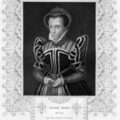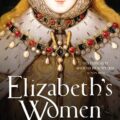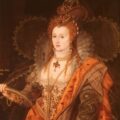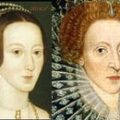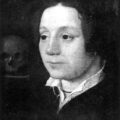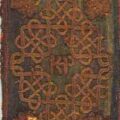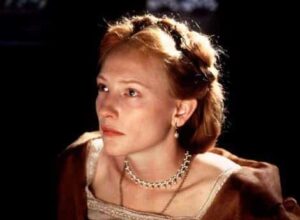
Today’s post is the first about two sisters (or rather half-sisters): Mary and Elizabeth, their relationship as children and what they both were like when Mary became Queen Mary I of England.
A Royal Childhood
Mary had hated Elizabeth’s mother Anne Boleyn, after all she was responsible in Mary’s eyes for the break-up of her parents’ marriage, for her change in circumstances – from Princess to bastard, for her deteriorating relationship with her father, for the suffering and deaths of good Catholic men like Thomas More, and for the poor treatment, even cruel treatment, which was being dished out to her and her mother. So, did this hatred of “the concubine” rub off on Elizabeth? Did Mary hate Elizabeth as much as she had hated her mother?
It seems not. Although Mary saw herself as Henry VIII’s true legitimate daughter, it seems that she doted on the young Elizabeth even though she had been ordered originally to Elizabeth’s household at Hatfield to help care for her. Just a few months after Anne Boleyn’s fall and execution in 1536, Mary wrote to her father saying:
“My sister Elizabeth is in good health, and such a child toward as I doubt not but your Highness shall have cause to rejoice of in time coming.”
Those don’t seem to be the words of a bitter and twisted young woman, but, instead, the words of a woman who delighted in her sister and wanted to share this with her father and encourage him to spend time with the much neglected Elizabeth. Although she had been deliberately placed in what Linda Porter (“Mary Tudor: The First Queen”) calls “a hostile relationship” with her baby sister, we have to credit Mary with rising above the situation and showing no animosity towards the baby.
After Anne Boleyn’s fall, Tracy Borman (“Elizabeth’s Women”) wonders if Mary’s attitude towards Elizabeth softened because they were now both illegitimate and were therefore equals. It may also be that Mary felt genuinely sorry for the motherless little girl and wanted to mother her and be protective of her.
When the future Edward VI was born in 1537, Mary was Edward’s godmother and Porter writes of how she was attentive to the little prince and left the Chapel Royal at Hampton Court holding Elizabeth’s hand. They may have been a dysfunctional family in many respects, but Mary seemed to have a true affection for her siblings and Borman writes of how while Lady Bryan concentrated on caring for Prince Edward, Mary supervised Elizabeth’s lessons, taught her games and showered her with small gifts and pocket money.
So where did it all go wrong?
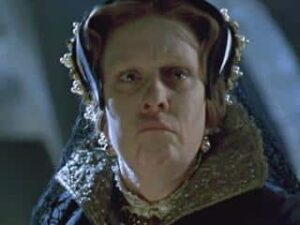
Difference and Divides
I think things began to go wrong after their father Henry VIII’s death in 1547. Mary had been close to her stepmother Catherine Parr but shortly after Henry’s death Catherine remarried and set up home with her husband Thomas Seymour and also with the teenage Elizabeth. Mary was horrified by this arrangement because she did not agree with Catherine remarrying so quickly and so offered Elizabeth a place in her own household, an offer that was quickly turned down. Mary was left to her own household and it could be that her disgust over this arrangement and this separation between the sisters had an adverse effect on their relationship.
Linda Porter also points out that by this time Elizabeth was 13 years old and had a mind of her own, along with what Borman calls “a confidence and independence of spirit that jarred with Mary’s reserved nature.” Although Mary had once delighted in Elizabeth’s precociousness “what was attractive in a child was suddenly less so in a woman” and all of a sudden Elizabeth wasn’t looking up to her big sister with admiration and devotion. Elizabeth had received a better education than Mary had and had learned new ideas and concepts, including instruction in theological ideas that Mary did not agree with – the sisters really didn’t have much in common now and the divide between them was growing steadily.
During the six years of Edward’s reign, although the sisters corresponded with each other by letter they hardly saw each other and just got on with their own lives. What was worse, poor Mary underwent even more suffering as her brother’s administration sought to deprive her of her beloved mass and make her accept Protestantism, whereas Elizabeth was in her brother’s favour.
Rivals
After her brother’s death and defeating the Lady Jane Grey and Dudley rebellion, Mary I ascended the throne in 1553 aged 37 amidst much rejoicing. Although their relationship had soured, Mary invited Elizabeth to accompany her on her march of triumph into London. But, although it was Mary who was their new Queen, it was the young and vibrant Elizabeth who took London by storm.
Tracy Borman writes about this day, saying:
“Naturally introspective and lacking her father’s ability to charm and enthral the crowds, Mary progressed through them, responding awkwardly to their cheers and appearing distant and aloof. When a group of poor children sang a verse in her honor, it was noted with disapproval that she “said nothing to them in reply”. By contrast, Elizabeth, who had inherited Henry VIII’s gift for public relations in abundance, attracted the most attention as she gracefully inclined her head and waved her hand, making every member of the crowds that throned the streets feel that she had saluted them personally.”
Elizabeth was a “people person” and Mary was severely lacking in such social skills, and I’m sure that Mary must have noticed the crowd’s reaction to her younger half-sister!
Beauty and the Beast
But their behaviour wasn’t the only difference between the two sisters, they also looked very different. Mary was 37 compared to Elizabeth’s 19, and she was showing her age.
Mary had suffered so much in her life and this and her constant ill health had aged her prematurely. Tracy Borman describes Mary as shorter than Elizabeth, with a lined face, a “sombre, tight-lipped expression”, no teeth, severe short-sightedness which caused her to stare at people in an intimidating manner and a gruff voice. She also lacked any sense of style and, although she loved fine clothes and jewellery, she wore heavy, high-necked gowns and often chose colours which clashed with her red hair.
In stark contrast to this ageing queen, Elizabeth was young, had loose, flowing red hair and, although she was not a classic beauty, she had inherited her mother’s charm and sex appeal. Elizabeth didn’t hide her body, she wore elegantly fitted gowns which suited her colouring and she had the self-confidence which was so lacking in Mary – she was irresistible and caught everyone’s attention. Mary would have been blind not to notice this – poor Mary!
In my next post, I will be writing about the sisters’ relationship as Mary rules the country, finds a husband and tries to provide England with an heir to the throne.
